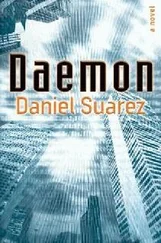“Had to test it.”
Kulkarni was cogitating, clearly trying hard to disprove it. “But if this is truly gravity you’re reflecting, then all baryonic matter should interact with the field. Not just diamagnetic materials but literally anything.”
Grady nodded. “Yes. Exactly. Even in a vacuum. And it does.” He picked up a hardcover copy of Isaac Newton’s Principia and, after holding it up, nudged it into the gravity field, where it floated eerily.
“What I don’t understand is why the altered gravity field doesn’t seem to propagate outside the sphere, as one would predict if gravity were flowing in a straight path.”
Kulkarni considered this. “And gravity propagates over any distance…”
“Right. If we were creating a gravity field as powerful as Earth’s, it should propagate outward. I think what’s happening is we’re causing a distortion, an eddy in the flow of gravitation.” He threw up his hands. “I’m just not sure yet.”
Kulkarni stood in wonder as he contemplated this. “We should do Newtonian motion experiments.”
Grady dragged a bucket of golf balls from a nearby lab table. “Already have…”
Moments later, Kulkarni was shouting joyfully as he hurled golf balls through the center of the test rig. The balls curved as they interacted with the gravity well of the apparatus, then arced off to ricochet against the lab walls.
Kulkarni shouted, “Did you see that?” He pointed. “Like an asteroid slingshotting past Earth’s gravitational field.”
Marrano was still wringing out his jacket. “Jesus Christ, I smell like a damned hobo.” He gestured to the humming apparatus. “And would you please kill that power? No wonder your burn rate is insane.”
Kulkarni glared at him. “Do you have any idea how important this discovery might be?”
“All I know is an investment has to make economic sense. Mr. Grady, have you filed patent applications yet?”
Grady exchanged looks with Kulkarni. He shrugged. “No. But look, there’ll be time for patents. And anyway, we shouldn’t patent the discovery itself.”
“Why the hell not?”
“Because it’s a fundamental insight into the nature of the universe. That would be like patenting electromagnetism. We need to share this information. There’s no telling how many innovations might spring from it. And it’s those innovations we can patent.”
“So basically you’re telling me we invested millions of dollars so you guys could win the Nobel Prize? You’d better get a lawyer, Mr. Grady.”
Kulkarni stared at the spinning golf balls and smiled. He looked amazed as he gazed up at the massive assembly. “Your discovery could change everything, Mr. Grady. It could change literally everything .”
Grady shrugged. “Well, I don’t know about that, Professor, given the energy requirements for the effect. But it certainly opens up some interesting possibilities.”
“Is there a landline where I can make a call?”
“Sure.” He pointed to the back wall. “The offices are through the door there.”
“Thanks.”
Marrano looked up. “Who you calling, Professor?”
Kulkarni spoke without turning. “The fund’s technical advisers in New York, Mr. Marrano. I don’t expect you’re capable of describing what we saw here today.”
“Tell them we’ve got the situation under control.”
Suddenly a billiard ball bounced across the floor and narrowly missed Marrano’s head.
“Heads up!”
• • •
Sameer Kulkarni moved through the unimpressive lab offices. What décor there was had faded from decades of exposure to fluorescent lights. Still, he examined the rooms with something approaching reverence.
This is where it happened.
Low-rent space with unused filing cabinets pushed into a corner. Racks of cheap computers busy processing something. All so… ordinary.
He noticed another origami geodesic dome on a nearby filing cabinet. He stopped to examine its precise, intricate structure.
Innovation was a curious thing. It never failed to amaze him.
And yet this place confirmed what they’d long known: that truly disruptive innovation rarely came from the expected sources. They’d had so much more luck investing in eccentric B and C students. The rationale was simple: Those heavily invested in the status quo had difficulty thinking outside of it—and were often tainted by it. Especially when success and peer approval beckoned. One did not accidentally graduate from top-tier schools. One strove to get in and to maintain grades once there, and to do that, one usually needed to be a master at conformity. To excel in all the accepted conventions.
No, the truly different thinkers often went unnoticed. Kulkarni’s organization had much luck along those lines in the Third World—eccentric geniuses reinventing infrastructure with small technological improvements: water filters, solar, optics. The trick, as always, was separating the wheat from the chaff. Finding the usefully crazy people among the seriously crazy ones. And that was something Kulkarni’s organization did better than Silicon Valley ever could.
The track record of Valley venture capitalists showed the pattern. A new, sexy tech idea would come along, and then every dollar would be chasing the same thing. Staffers from the original firm would be poached to launch rival firms—until the market became glutted with variations of the same craze. Valuations would skyrocket, and finally, the bubble would burst—the market plummeting. Then a fallow season. Then the cycle began all over again.
And for what? The development of the railroad blew away the Internet when it came to disruptive innovation. Interchangeable parts? Likewise. No, mainstream tech innovation was no threat to the status quo.
Kulkarni’s organization didn’t follow that model at all. It was one reason their investments were seldom near the tech hubs. They wanted the geniuses they identified to remain uninfluenced. It resulted in lots of failures, but then truly useful knowledge was often pried from the cold dead fingers of failure. It made those once-in-a-generation breakthroughs all the more valuable. The breakthroughs that would one day change the course of the human species.
On a day like today, for example.
Kulkarni slowed as he noticed whiteboards in the conference room. They were slathered with complex mathematical equations. He stood in the doorway as he studied the notations, nodding as he followed their logic—but then was lost. Grady had gone somewhere Kulkarni could not follow.
“Very clever, Mr. Grady.” Kulkarni realized Grady’s insights would never have occurred to him. Not in a million years. And neither had it occurred to other great minds of the age—biological or synthetic. Grady’s innovation was one of the rare “virgin births”—never conceived of before.
Kulkarni sat on the edge of the conference table near a desk phone. He just stared at the whiteboards and contemplated how differently Grady must see the universe from most people. And how beautiful that must be.
He sighed. It pained him to do this. It really did. But it was necessary. Deep down he knew it was. But doubt came with the job. After a moment Kulkarni clasped his hands together and spoke to the empty room as if in prayer. “Varuna, I need you now.”
A calm, disembodied female voice answered inside his head. “Yes, Tirthayatri. How may I assist you?”
“I am at incubator sixty-three.”
“I see you.”
“What is the status of this facility?”
“Simulations of incubator sixty-three experimental designs are inconclusive.”
“And if those designs were validated?”
“Successful implementation of incubator sixty-three designs would result in a tier-one branch event.”
Читать дальше












